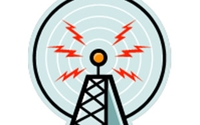 By Chuck Martin
By Chuck Martin
Google just gave beaconing around the world a big boost.
A new open way for Bluetooth Low Energy (BLE) beacons to communicate with mobile devices was just introduced by the search giant.
Eddystone, named after a lighthouse in the U.K, is Google’s new standard that developers can use for both Android and Apple phones.
Google says that Eddystone will offer precise location capabilities making it easier for apps to find and communicate with nearby devices and beacons.
The idea, and this is where it gets interesting, is that hardware manufacturers can support multiple mobile platforms and application scenarios with a single beacon.
In advance of the Eddystone introduction yesterday, Google already partnered with numerous beacon companies, including Radius Networks, Bluvision, Estimote, Bkon and Signal360.
Google plans to incorporate the technology into Google Now, so that more contextually relevant information can be provided, such as showing you menu items when you’re inside a restaurant.
The company already had kicked off beacon-based transit notification in Portland so commuters could get faster access to real-time transit schedules for specific stations.
Apple’s iBeacon has had the obvious market lead in beacons, though it works easily only with iOS devices. The opportunity for Google, if developers massively adopt Eddystone, is to become a standard across both Android and Apple mobile devices.
Another advantage of Eddystone is that it can broadcast not only triggers for mobile apps but also Web page addresses that can be displayed by a phone that doesn’t have a beacon-ready app installed. This could be a big deal, since Android leads in mobile market share globally.
Eddystone-enabled beacons also can send additional data, like temperature or humidity, features built into sensors on the beacons. I saw a beacon demonstration of this at the CES International earlier this year and it works.
The bottom line is that beacons, or more broadly sensors, are going to exponentially grow in deployment and use as the Internet of Things mushrooms.
One company already is enabling app developers to real-time tap into more of the sensors built into smartphones, as I wrote about here recently (Tapping into All the Smartphone Sensors).
And now Google’s Eddystone kicks the beacon door wide open.










